We may receive a commission when you use our affiliate links. However, this does not impact our recommendations.
 A friend in Utah needed a new kitchen and interviewed some cabinetmakers to do the job. My friend wanted dovetailed drawers, but one cabinetmaker said he had “something better.”
A friend in Utah needed a new kitchen and interviewed some cabinetmakers to do the job. My friend wanted dovetailed drawers, but one cabinetmaker said he had “something better.”
What could be better?
“It’s glue and super-high clamp pressure,” the cabinetmaker said. If you apply enough pressure, he said, the joint will be so strong that the wood will fail before the glue. So no joinery. Just glue and clamp pressure.
Most of you are scoffing right now or wondering if my friend should file a claim with the Better Business Bureau. But if you keep an open mind, you might be surprised by what glue can do. It will sometimes defy conventional woodworking wisdom.
Years ago, I was worked with Troy Sexton, an excellent furniture maker in Sunbury, Ohio, who had a restless and sharp mind. He’s the kind of guy who would wake up one morning and convert his table saw into an incredible meat grinder for processing deer. Or he’d bolt together two table saws to create a tenon-cutting station that defies my efforts to describe it.
Anyway, one day I showed up at his shop and he handed me a face frame to a cabinet and gave me these instructions: “Try to break it.”
I couldn’t bust it. I knocked it around. Twisted it with all my might. After about five minutes, I handed the face frame back to him. Troy explained what he was up to.
There was no joinery in the frame. He’d assembled the frame with yellow glue and pocket screws. After the glue had dried, he’d removed the pocket screws.
Troy shrugged.
If you think I’m suggesting that joinery is superfluous, you’re missing the point. For the record: Joinery is good. You want interlocking parts in your furniture for a wide variety of reasons.
Instead, I’d like to suggest that many of the woodworking rules we’re taught are untested assumptions. I’m guilty of believing them and repeating them, just like every woodworking writer. It is a daily battle to keep my eyes and mind open.
I might not ever make drawers with only glue and pressure, but the idea behind it makes me reconsider what I know about stacked laminations, gluing up tabletops and the way I make the crest rails for my chairs.
Don’t believe everything you read, even here. Or, as Mark Twain put it: “All generalizations are false, including this one.”
— Christopher Schwarz
Here are some supplies and tools we find essential in our everyday work around the shop. We may receive a commission from sales referred by our links; however, we have carefully selected these products for their usefulness and quality.






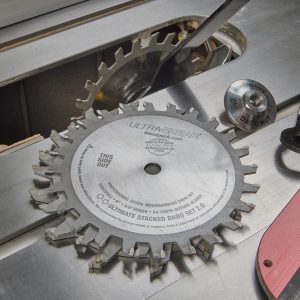
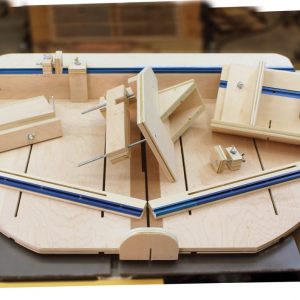
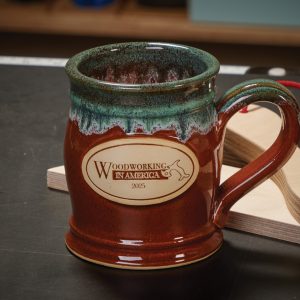
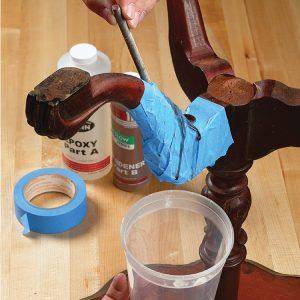

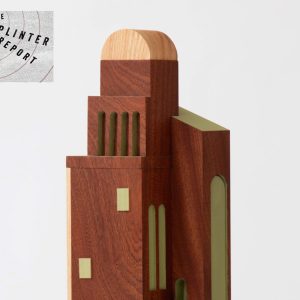

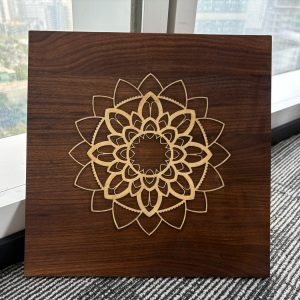




glue is interesting…. i found an old bottle of hide glue from 2013. opened it and it really had no odor so i tested it on two boards— guess what it still worked…… the moral: test all assumptions and go with what YOU know!!!
I was taking a class in building kitchen cabinets. The instructor said we would meet at his shop one evening. He took a piece of 1/2″ Baltic birch plywood to the table saw and cut 4 drawer sides. He then ray a small bead of yellow glue down the edges, put the together (butt joint) and grabbed his air hose with the stapler attached and popped three times down each side. He immediately handed this assembly ( we are talking seconds since he applied the glue) to the biggest guy in the class and said “Pull it apart”. No one in the class could make those sides budge. I immediately went out and bought an air stapler. can’t swear the same would work in hardwoods (probably not) but for drawers made with plywood, you can’t make them faster or stronger.
Must be some magic glue. I’ve had to modify pocket screwed and glued face frames and never had a problem breaking them apart with a sharp mallet blow with the screws removed.
The wood may break but in my experience it’s more likely to be a compressive failure in the cross grain before the glue gives way if you aren’t careful. That’s relatively simple to avoid by either striking directly away from the end grain piece or better yet with a block right at its end so the breaking force is pure shear in the glue line with the force parallel with the long grain piece. The block also helps keep the top edge of the end grain piece from splitting off.
Total glued area makes a difference. Typically for me it has been 3/4″ x 2″ to 3.5″
As a former school superintendent I always thought that two of my most important jobs were to be “curious” and “discontent”. Chris—-I think you do both of those admirably well. Keep looking and questioning and keep us informed.
Three joints, long grain to long grain. One using hide glue, one using yellow glue, one using library paste. Clamp each with bar clamps. Remove the clamps from the first and test the joint. Same with the second. Which of the three is the strongest. Answer, the one using library paste. Why, it still has the clamps on.
Hate to break the news,,,But if properly prepared..Wood will ALWAYS fail before the glue joint.
While I can appreciate the strength of the glue joint now, what about in 50 years? The dovetail will be just fine. If in 50 years, you’re concerned about the dovetail becoming loose because of wood shrinkage, then the glued joint would suffer the same fate or worse. If the glue held, but the wood under it shrunk, I would think the wood would split.
Damned good one Chris. Thomas Jefferson said: “I have sworn upon the altar of God eternal hostility against every form of tyranny over the mind of man.” You are eternally hostile to every form of dogma. What a great lesson for this morning. Thanks. John
Matthias Wandel at woodgears.ca did some tested glued finger joints versus glued dovetail joints and concluded that finger joints are a bit stronger, because they can have more glue surface. This is done with of course modern glues. See https://woodgears.ca/dovetail/strength.html Scrolling to the bottom of that link you will find other testing he did including a strength test of various modern glues and different gluing methods. You may find it interesting to read and watch. He did not test hide glue.
I still love dovetails, but I think more romance, than function.
Chris you write: “You want interlocking parts in your furniture for a wide variety of reasons.” Although I can imagine some of the reasons, would you be so kind as to expound on the virtues of interlocking parts?
In 2007 a competing magazine did a glue test at my alma mater, Case Western Reserve University. They used bridle joints and found PVA glue required the most pressure to break the joint. Oak and maple joints failed due to wood breakage not glue line failure. Other glues and other woods it was a mix of glue and wood failure. Liquid hide glue fared better than hot hide glue with polyurethane glue performing the poorest.
One test, one type of joint, but a great University!
One day in 2003, out of curiosity, I glued two shorts of Honduras mahogany end-to-end with hot hide glue. First a sizing coat, then 10 minutes later, a second application of glue, then lengthwise, full-surface, clamp pressure from a K-body as tight as I could make it barehanded. I couldn’t break the resulting assembly, though I did stop short of clamping with the joint on the bench edge & whacking it with a sledge. I was amazed. That’s all I got. The story ends there.